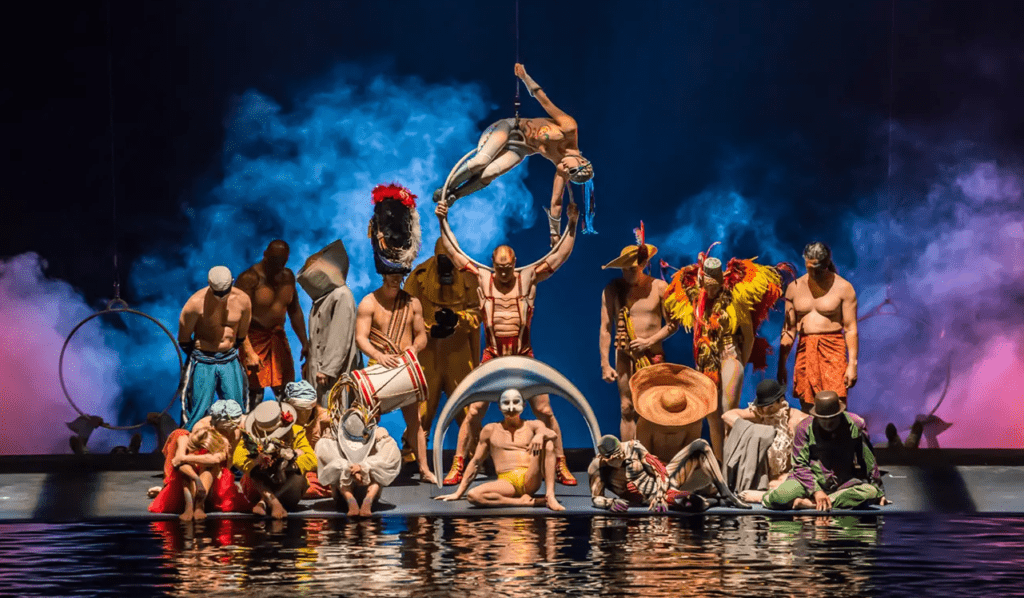RIO DE JANEIRO, BRAZIL – On March 8th this year, a few days before extraordinary measures were decreed in Spain because of the coronavirus, Catalan comedian Mateo Amieva was returning to Barcelona on a flight from Doha, where he had performed in Messi 10 show, one of Cirque du Soleil’s most recent productions. He did not know then that those performances would be the last for a long time.

A week later, all the theaters and tents on the planet were interdicted by the pandemic and, paradoxically, the shutdown impacted the company more strongly, which, theoretically, would have more resources to tackle it, as the world’s largest show producer, with an unimaginable amount of capital for any other company in the industry.
A combination of past and present factors conjured up to unleash a perfect storm that led to a threat of bankruptcy that caused astonishment: how is it possible that an empire that has not stopped growing since its foundation in 1984, has collapsed in just three months?
It’s not just the coronavirus’s fault. The pandemic put an end to an organization that for five years has been dragging along a debt equivalent to €815 million euros (R$4.7 billion at current prices) and has been starring in a business soap opera in recent days that involves co-founder and former owner Guy Laliberté, the Canadian media conglomerate Quebecor and the three international investment companies that share the group’s ownership.
Laliberté stated last week that he was willing to buy back the company to get it out of the hole, and Quebecor also expressed its desire to inject capital, although for the time being, according to its executives, it is unable to do so because Cirque du Soleil’s current managers refuse to disclose the real figures.
These, in turn, accuse the Québecor group of pushing to devalue its shares and take over the brand at a bargain price.
But the only one who has so far put real money on the table is the government of Quebec, which has approved a credit of €182 million (about R$1 billion) to prevent the shipwreck of one of the major prides of the French-speaking region, as well as an important source of money for the province. Cirque du Soleil was born and is based in Montreal, where it employed almost 5,000 people.
The company has temporarily laid off 95 percent of its employees – including performers and technicians from 20 touring shows – approximately one hundred per production. With the money received from the state, plus another €45 million (about R$260 million) that the owners injected in early May, the company barely reaches the approximately €150 million (something like R$870 million) it needs only to reimburse the holders of tickets sold for the canceled shows.
The workers, however, remain calm, believing that the fact that the Quebec government has come to rescue the company means that it will not let it collapse. “We remain optimistic. The company hasn’t canceled any shows for the time being, it has only deferred the performances scheduled for the next few months,” Amieva said.
He planned to travel to Buenos Aires in the next few days to continue with the Messi 10 tour but has already been told that these performances have been rescheduled. “There are always seasons when we don’t get paid, but the tours’ wages make up for it. The stop now is going to be longer and we’ll have to take it as it comes,” adds the performer, who has worked for 12 years on Cirque du Soleil’s permanent productions in Las Vegas.
The company’s website, in fact, maintains ticket sales for the 20 active shows. The first to return to the stage in the post-pandemic era is already known and is already there: The Land Of Fantasy will be resumed in the Chinese city of Canton this week. Apparently, everything is still working on an artistic level.
But on the financial front, the future is very bleak. Little remains of that powerful company that was studied as a model of creative and innovative management. “It was the perfect example of the so-called blue ocean strategy, which consists of creating new market niches, a product that generates a formerly non-existent demand. After 20 years of non-stop growth, the formula began to have more and more imitators, and this forced them to produce more expensive shows to differentiate themselves,” explains Bruno Cassiman, professor at the IESE business school and an expert in corporate strategy.
Need for capital
The growing need for capital pushed Laliberté to form a partnership in 2015 with three major investment companies – the US TPG fund, the Chinese Fosun, and the financial Caisse du Dépôt et Placement du Québec – which divided 90 percent of the shares among themselves. The founder pocketed about €1.4 billion at the time and retained ten percent of the company, which also crashed two years later.
This operation changed the management style to a riskier model, but one that promised great dividends: it was a matter of putting off payments on the €815 million debt produced by the acquisition, while improving short-term profitability, boosting the brand to sell the company in five or six years. “It could have worked out very well, but the pandemic disrupted this strategy,” points out Cassiman.
A diagnosis of the future? “It will depend on the external support the company receives and how they structure the debt. We’ll have to clean up,” the expert predicts. Perhaps nothing will ever be the same for Cirque du Soleil after the coronavirus.
Source: El País

